Espacio Intermedio: The Space In-Between
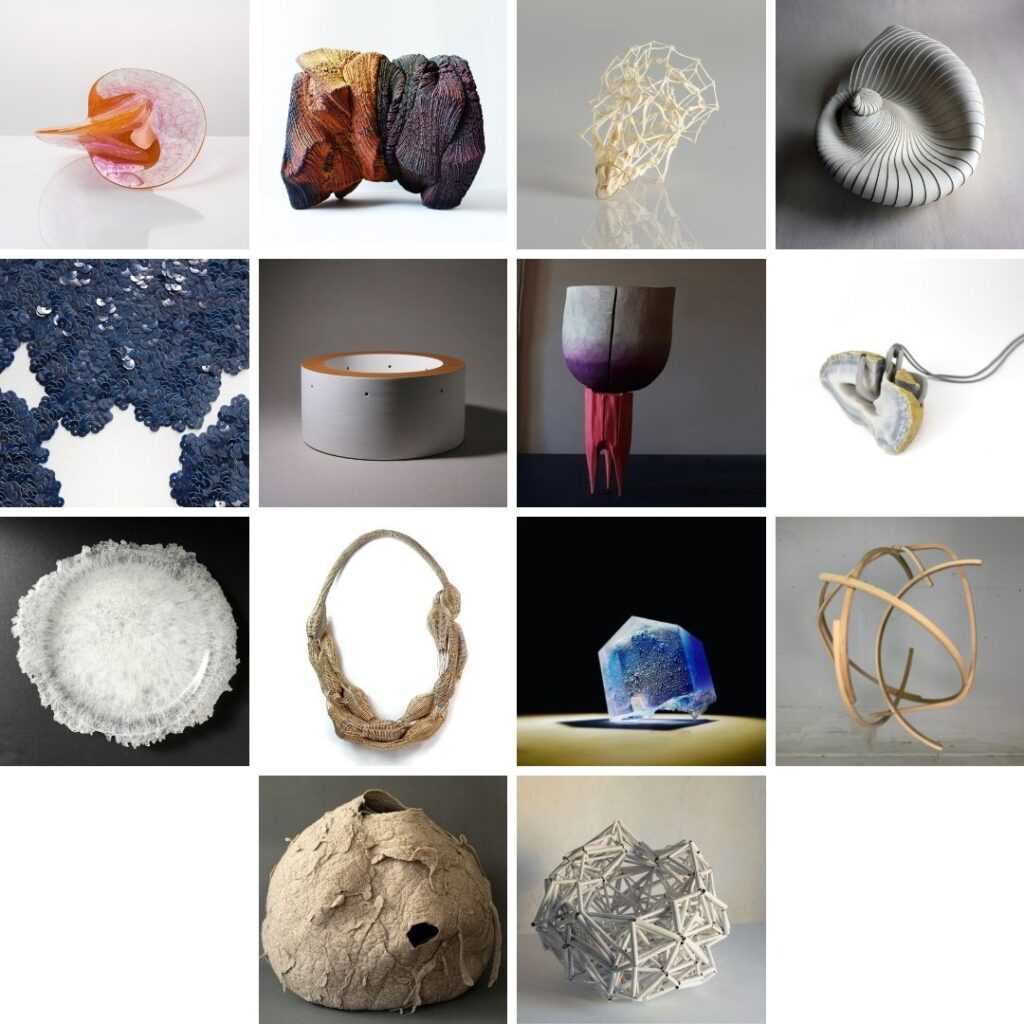
Espacio Intermedio is an online gallery for artistic crafts led by Cristina Vallejo, an architect and the founder of the furniture and contemporary craft studio ELSUR, and Marta Redondo, an architect, specialising in the design, management, and direction of exhibition and museum projects. They joined forces with the mission to promote creatives who work in that “intermediate space” between art and the everyday object.
They started Espacio Intermedio in January 2021 with the online exhibition “Hybrids. Exploring Spanish artistic crafts”. In June 2021, they presented the exhibition at a venue in Madrid.
Hybrids: Discovering Spanish Artistic Crafts
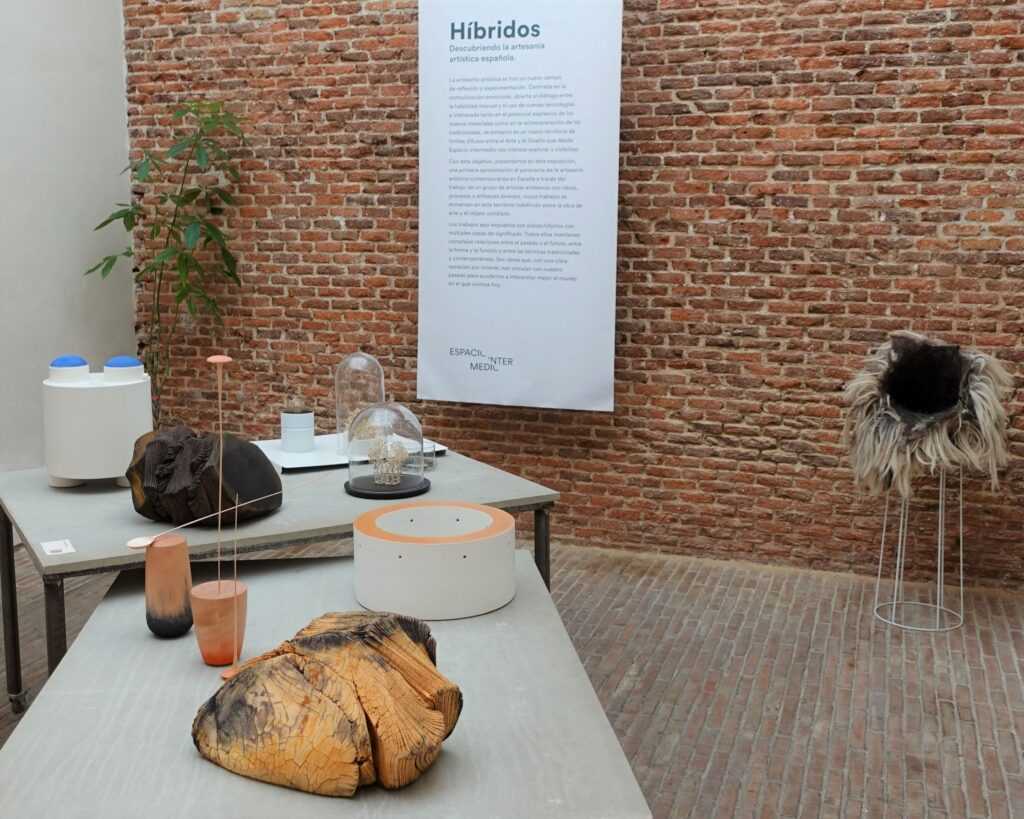
The aim of the exhibition was to showcase contemporary artistic artisanship. On display were works of fourteen artists-craftspeople whose works exemplify diverse techniques, processes, and materials: Rebeca Huerta (glass); Ícaro Maiterena (ceramics); Elena Moreno (jewellery); Mercedes Vicente (textile); Carmen M. Castañeda (visual artist of haute couture embroidery); Juan Ortí (ceramics); Álvaro Aramburu (wood sculpture); Edu Tarín (jewellery); Sandra Moneny (glass); Irene G. Barrera (jewellery); Luis Parades (glass); Unai Gabilondo (wood sculpture); Soledad Santisteban (textiles); Tim Johnson (basketry).
I highlight six here. My selection is by no means a statement about merit or my preferences. I chose them to show the variety of materials and disciplines that Espacio Intermedio represents.
Ícaro Maiterena: Ceramics
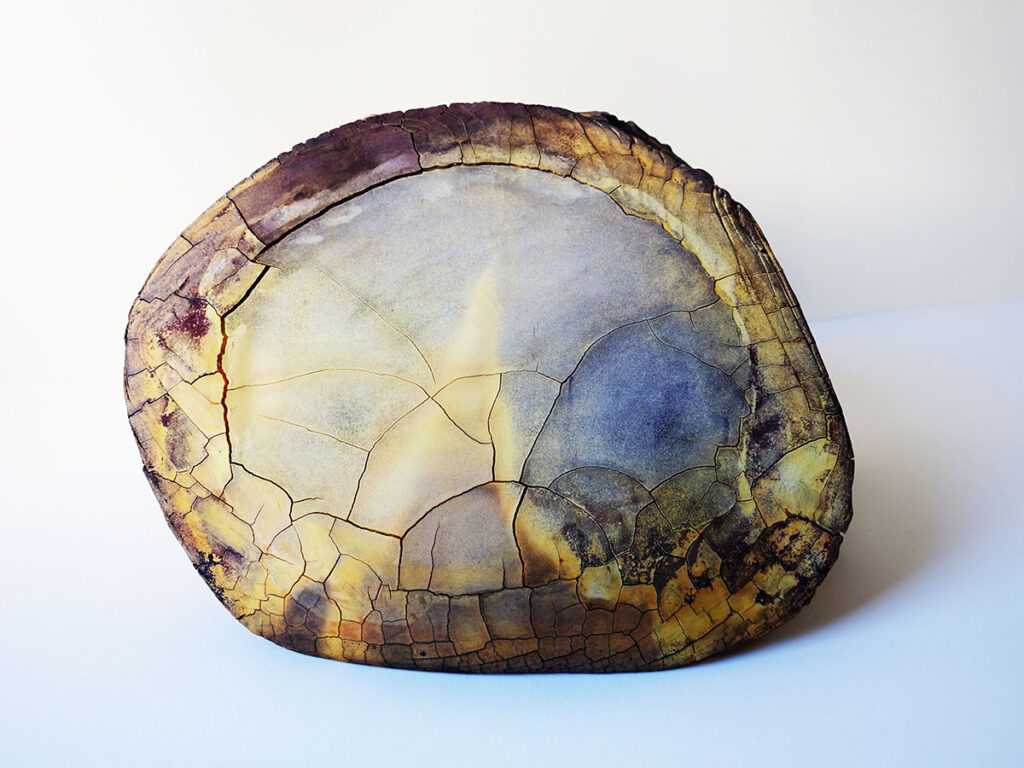
Madrid-born Ícaro Maiterena is a creator who works with different artistic languages: video, experimental film, photography, installation, performance, scenography, sculpture, drawing, engraving, circus, and dance. A graduate in fine arts from Complutense University of Madrid (UCM), he furthered his studies by earning a Higher Technical Specialist in Arts Applied to Sculpture at the Escuela de Arte La Palma Madrid (Art in Madrid). He currently teaches in the ceramics program at the Moncloa School of Ceramics. He is a member and co-founder of the Colectivo Lisarco, an association of professionals from different disciplines who have designed and developed collective artistic and pedagogical projects since 2006. His work has been shown in art fairs, group, and solo exhibitions in Madrid and London.
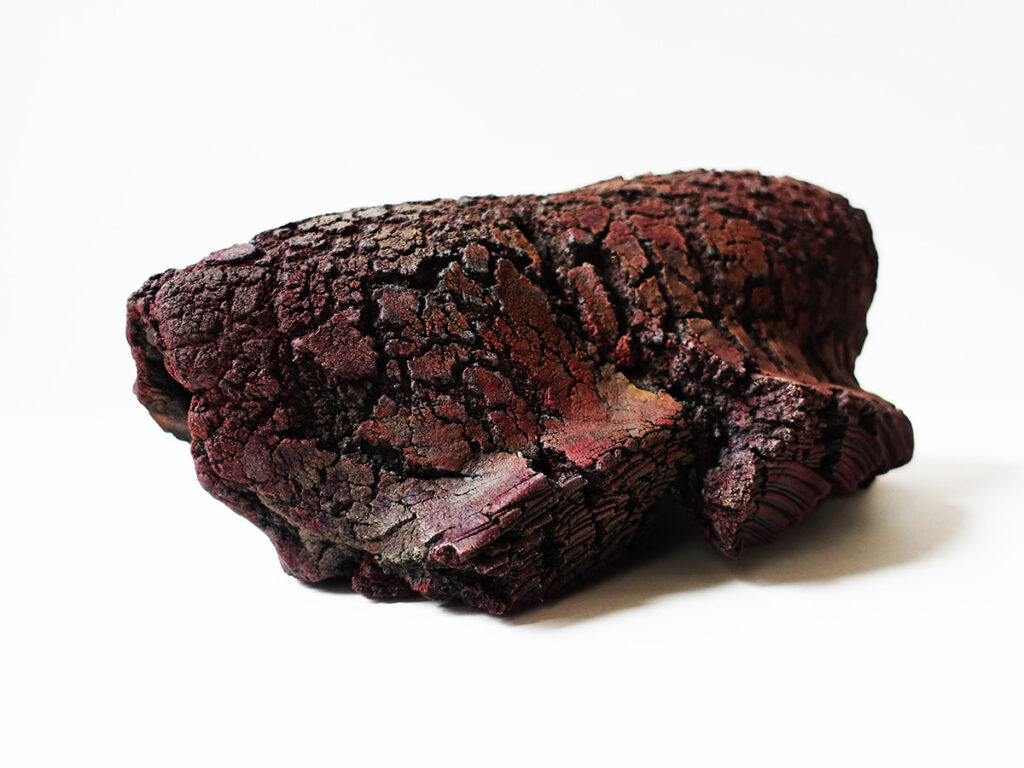
Luis Parades: Glass
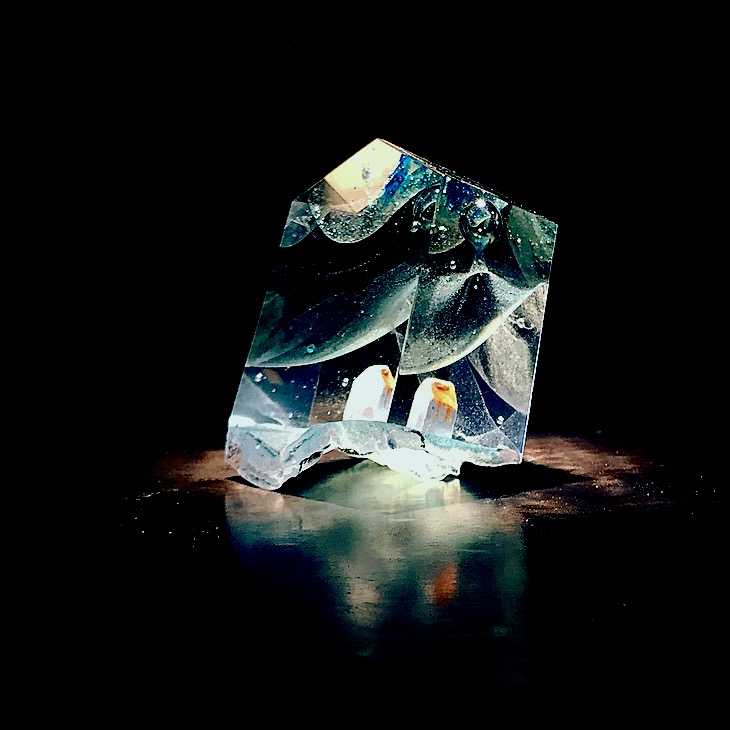
The early career of award-winning glass sculptor Luis Parades was in the metal and glass industry. In 2003, he began formal training in several glass-blowing techniques and ventured into experimental processes of the material. He incorporates techniques, such as thermofusion, heat blowing, thermoforming, and blown glass or melt blowing – roll-up. He has received numerous prizes and distinctions. His work is part of the collections of public and private institutions, and he has exhibited at art fairs and biennials, solo and group exhibitions in Spain, France, Germany, including the prestigious Maison & Objet Fair in Paris.
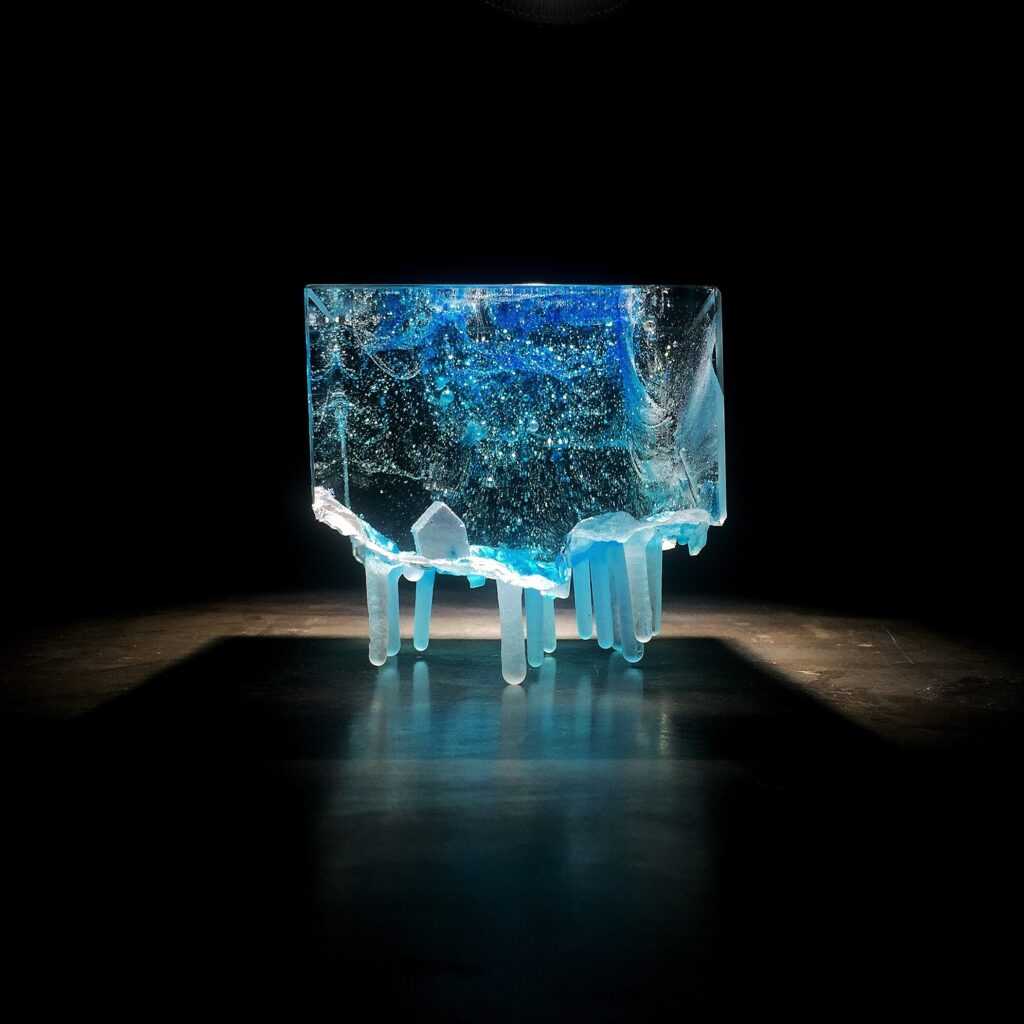
Elena Moreno: Bone jewelry
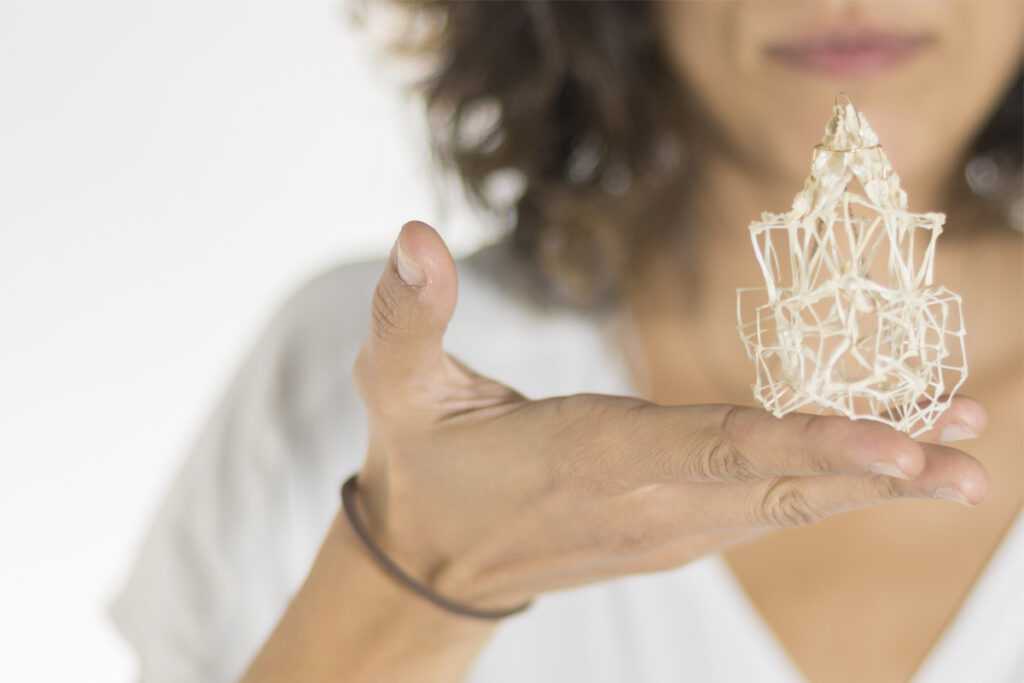
Elena Moreno has an extensive educational and professional background in conservation, restoration, and archaeology. She has worked for several museums and research centres in the field of archaeology and paleontology. In 2012, she began studying at the School of Art and Design, Ceramics, where she later pursued additional studies in artistic jewellery. After completing her studies, she continued working and training in the field of contemporary jewellery. This award-winning creative, whose work shows an evolution towards sculpture, has shown her work in Spain, Portugal, and Germany.
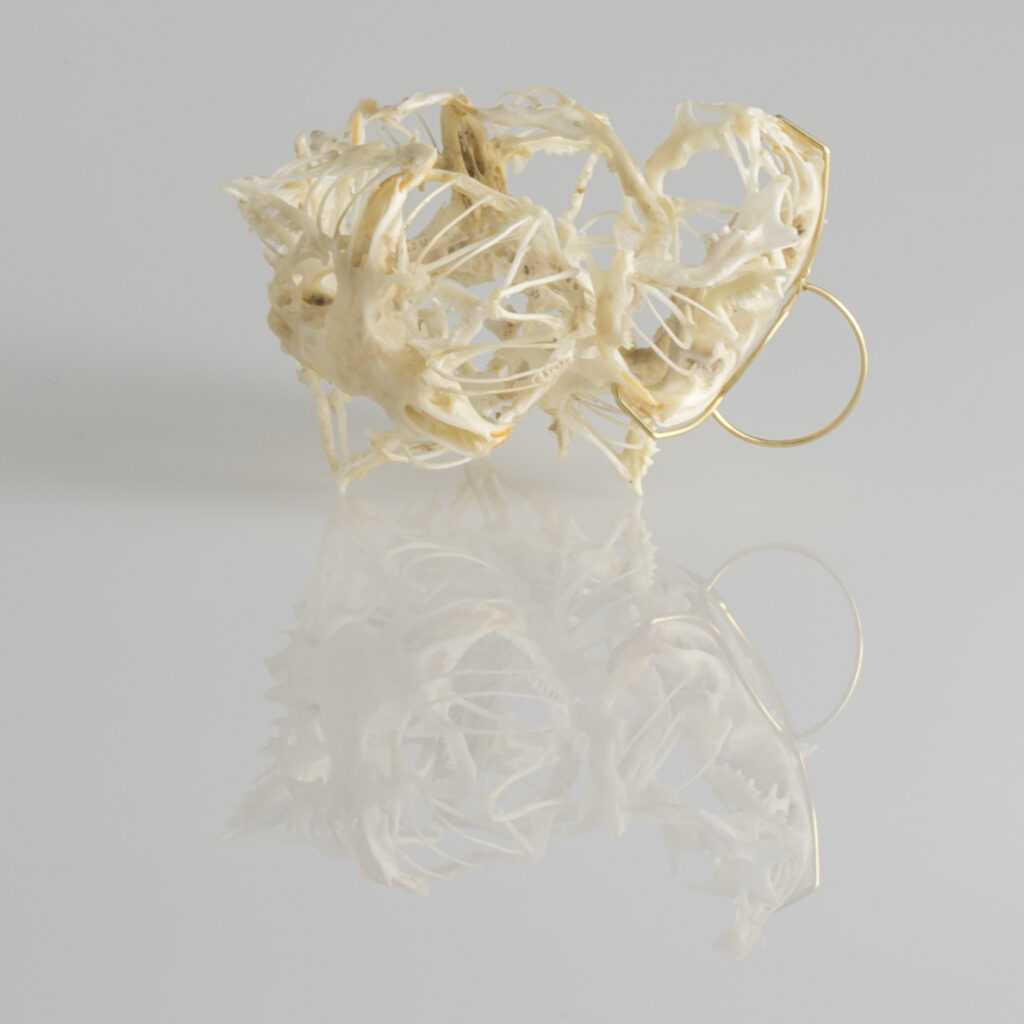
Álvaro Aramburu : Wood
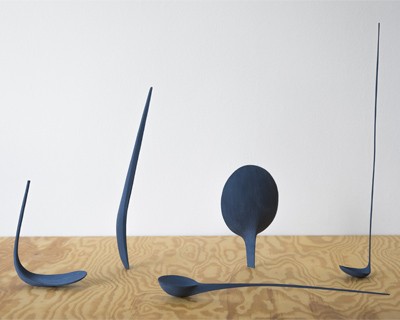
After several years of formal training as an industrial designer in Madrid, Álvaro Aramburu began his artistic career far from the peninsula, specifically “in a small village lost in the Swedish forest.” There, he discovered wood as a means of expression. The discovery led him to move away from the industrial product and reinvent his creative process. He studied at the HDK – Academy of Design and Crafts, University of Gothenburg. At the Technical University of Madrid, he earned a master’s degree with a specialization in woodwork. He has since exhibited his work internationally.
His pieces arise from his interest in commonplace elements that stand out for their functionality; objects and furniture with a functional and artistic nature.
“In my work, this function is prominent, although not effective. My spoons are useless in the kitchen, and my lamps do not illuminate the living room. Nevertheless, their ineffectiveness and fragility are essential ingredients in my process, allowing me to re-evaluate the most authentic qualities of the objects that accompany us in our daily lives.”
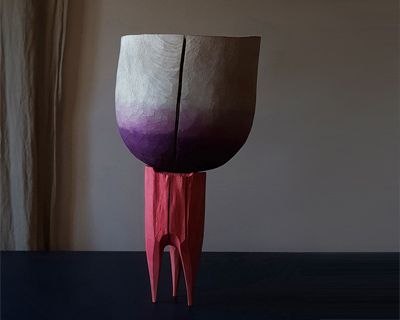
Carmen M. Castañeda: Haute Couture Embroidery
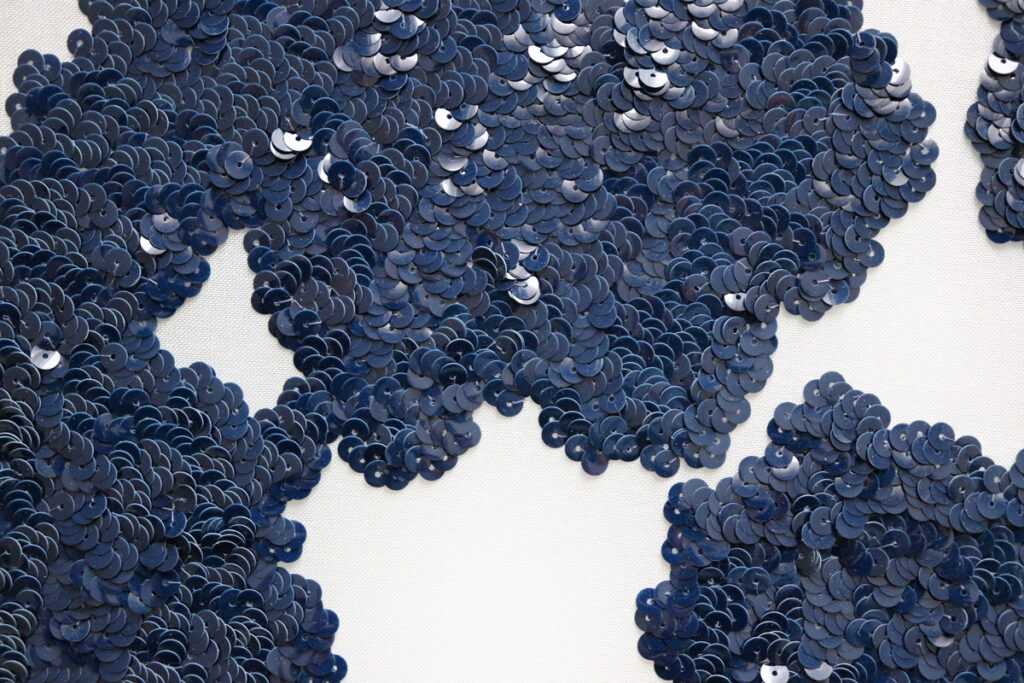
Carmen M. Castañeda is a visual artist and a researcher in experimental embroidery. After completing studies in fine arts, she studied at the prestigious Ecole Lesage Paris. There, she learned haute couture hand embroidery. This discipline became the basis of her artistic language, which she viewed within a conceptual and abstract framework. She has exhibited her work in Spain, Portugal, France, and England and participated in art fairs in Spain and Portugal and biennials in the United Kingdom. She presented her first solo exhibition in 2020, ‘Linea de Tiempos’’ at the Materna y Herencia Gallery in Madrid.
Her work attempts to decontextualize haute couture embroidery by exploring different artistic languages between matter and process; work marked by the repetition of the same embroidered gesture, as opposed to the current industrial rhythm.
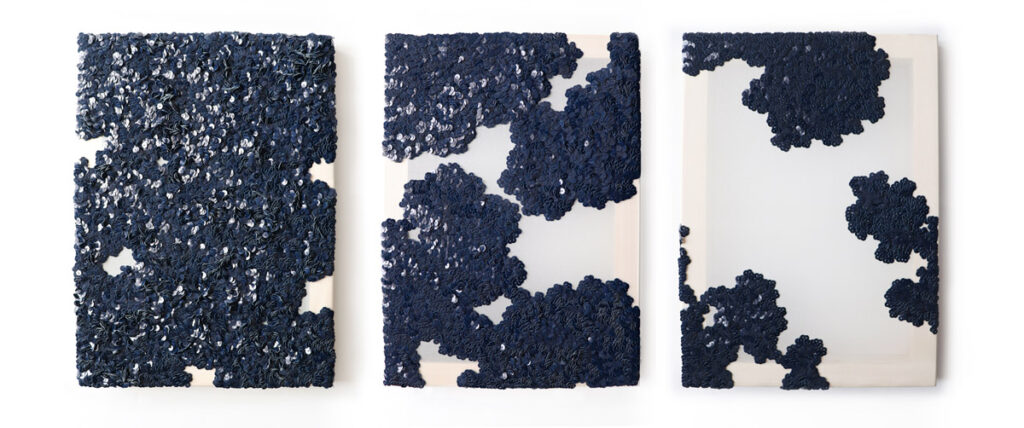
Soledad Santisteban: Felt
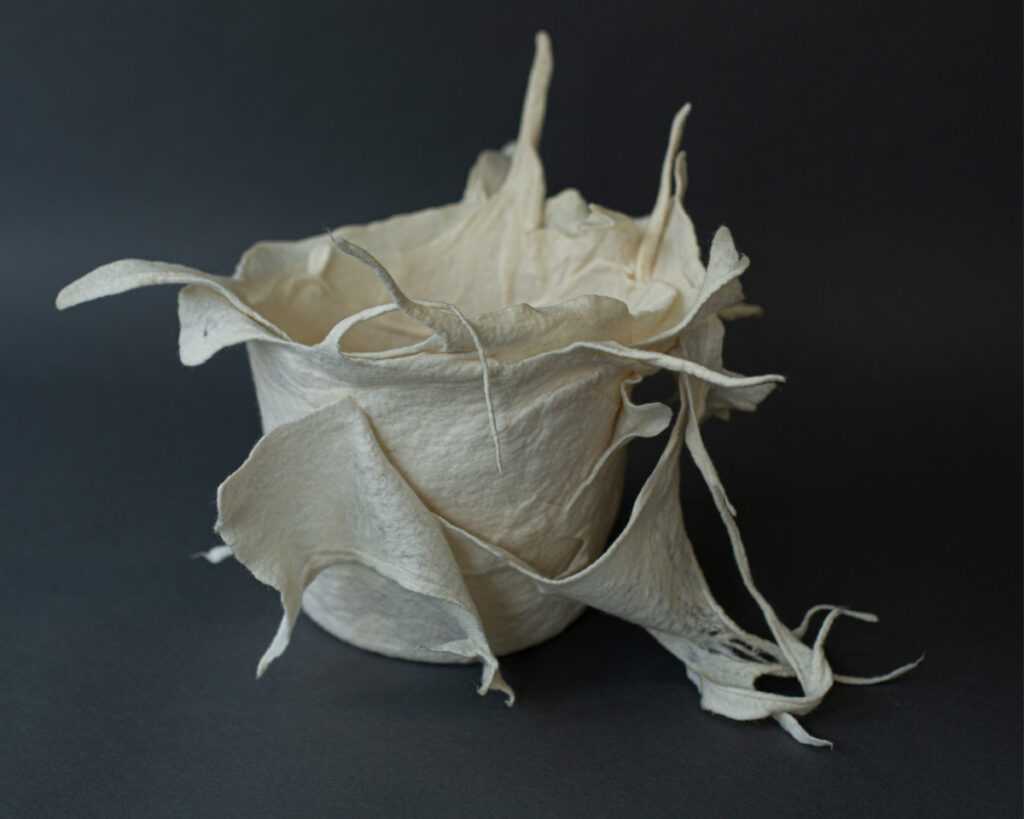
Bilbao-born Soledad Santisteban began to study architecture before switching to geography and history. She subsequently studied preventive conservation, specialising in textiles. In 1985, she opened her workshop in Bilbao, a research and teaching centre for traditional textile techniques: felting, loom weaving, bobbin lace, crochet, tapestry, macramé, vegetable dyes, and the conservation and restoration of textile heritage. Her creations are the result of the research that she carries out in her workshop.
“My work arises from continuous personal experimentation with natural fibers, perceiving and enhancing their colours, and with traditional textile techniques. After studying them and getting to know them deeply, I make them evolve, breaking their limits, which allows me to create expressive and suggestive pieces. All my works arise from shapes that will create lines, profiles, surfaces, and volumes, concave and convex, to collect, hold, open, close, to explode”.
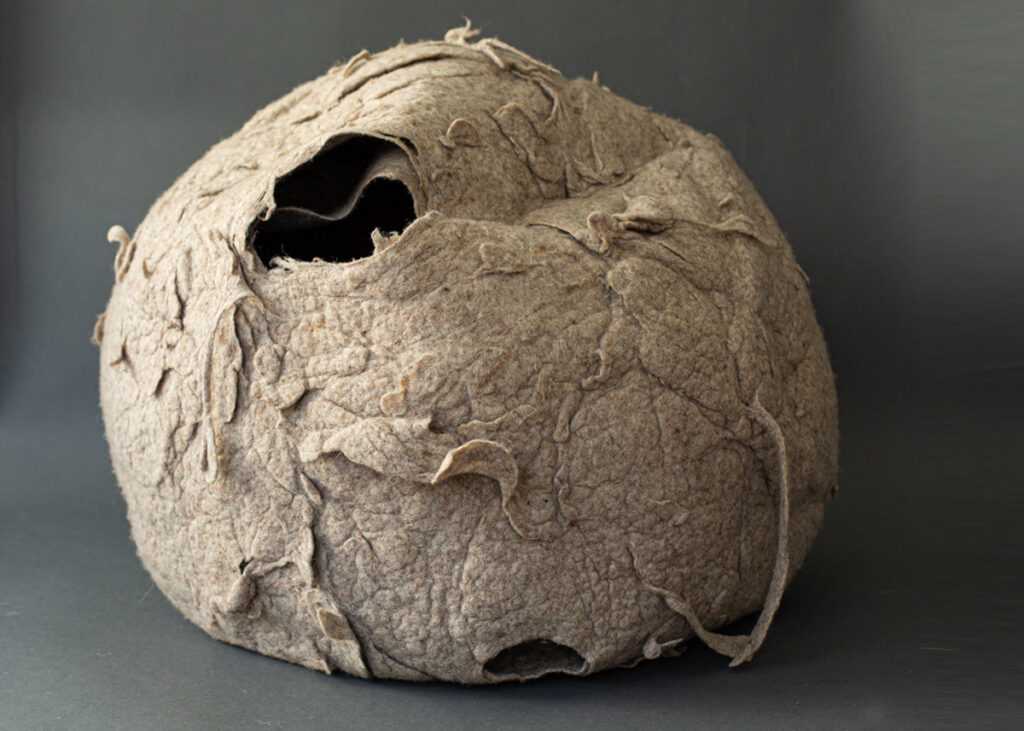
Up Close with Espacio Intermedio
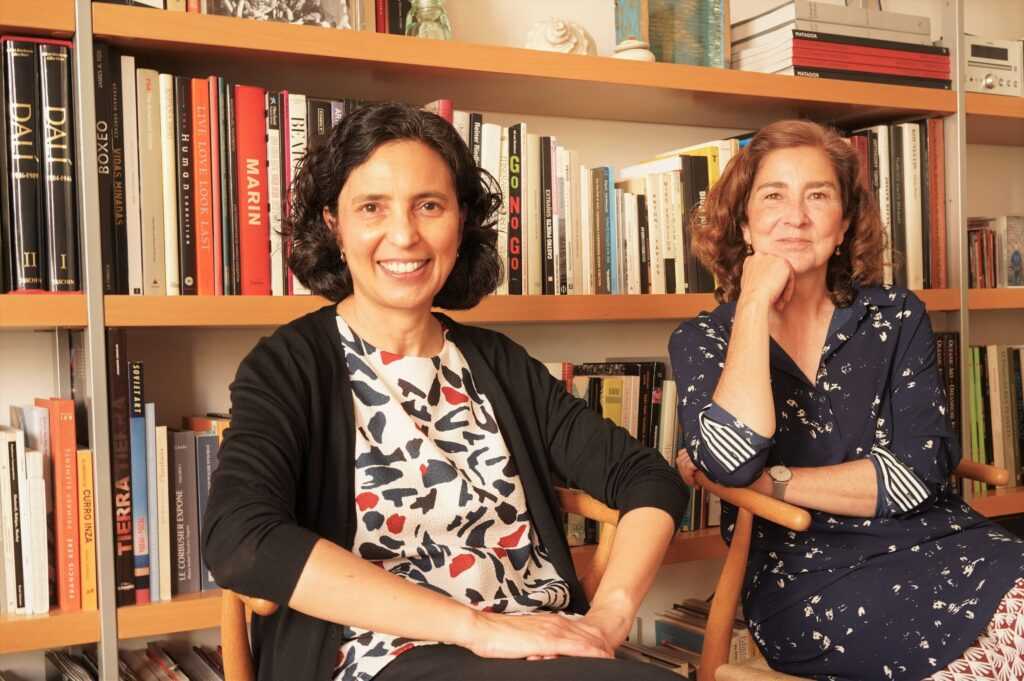
Why did you create Espacio Intermedio?
Artisanship does not express itself in one manner but through many. Each is distinctive due to a unique condition. Of these expressions, contemporary artistic craftsmanship is perhaps the least known. We created Espacio Intermedio to give visibility and value to this type of contemporary artisanship. With a basis in and deep knowledge of materials and techniques, it has a clear artistic vocation.
Although your members work in a contemporary vein, is there a Spanish or regional tradition or reference concerning their techniques, designs, or inspiration? Can we speak about Spanish heritage, or is this too broad a paradigm?
With the access we have to information nowadays, it is normal to have external references. Even though many of the traditional techniques are shared or similar in different areas of the planet, it is unquestionable that place, history, local traditions, or materials specific to each region of Spain are present in the works we exhibit. The starting point for many of the creations presented in Espacio Intermedio has a basis in a deep knowledge of traditional Spanish techniques, such as basketry or felting wool from local sheep, to name two. The results arise from their reinterpretation and a search for innovation, which give rise to new expressions that reflect the times in which we live.
What, if any, is the importance of local or regional craft markets, and organizations as a showcase for their work?
Any form of quality promotion and dissemination of these works is crucial. There are regions and autonomous communities that are making an effort to promote crafts effectively. Despite this, we believe that there is a need for increased support at the state level to enable joint actions. We must unify so that these magnificent works are understood and promoted by the different communities. We can do more if we compare ourselves to neighbouring countries, such as France, the United Kingdom, and the Nordic countries.
What are the plans for your organizations in terms of creative projects and market expansion?
Espacio Intermedio started as an online gallery specialising in Spanish contemporary artistic crafts. We will have an annual calendar of online exhibitions and alternate with other formats, such as presentations or small physical exhibitions in different spaces.
We are interested in making known the finished work and the process and the people who make it. We want to bring the public closer to the workshops of the artist-artisans so that they can get to know what is behind each piece. An example of this is the well-received talks we organised during the European Crafts Days with three artists we represent.
We intend to schedule new online talks with the other artists/artisans in their workspaces and, when the situation allows, to open these spaces to the public. In addition to talks, we want to develop debates, workshops, and meetings to foster an understanding of and appreciation for these types of work in Spain.
How have social media platforms impacted the way you carry out your marketing strategy?
Social networks are an ideal medium for publicising our work. They help us in two ways. On the one hand, they allow us to have a much greater reach and reach a diverse public, impossible in any other way. On the other hand, they nourish us with information. We can discover the work of many artists/artisans.
What have been the challenges and opportunities for your members due to the COVID-19 pandemic?
The craft sector has been affected by the pandemic. There has been a suspension or postponement of many traditional dissemination and marketing channels. Artists, artisans, and galleries have had to look for other ways to meet the public. As a result, the sector faces the challenge of adapting to the digital world and searching for mechanisms and tools capable of transmitting, virtually, the qualities of works that demand to be touched and smelled.
On the other hand, we believe that the difficulties and confinement during this period have allowed them to reflect on their work, rethink it and sharpen their wits to move forward with new proposals. We want to take an optimistic view. We are at a time when, slowly but surely, normality is returning. We perceive a movement, a reactivation.
We ask artisans-artists who consider their work artistic craftsmanship to send us information about their work, and we will consider them for inclusion in our catalogue.
